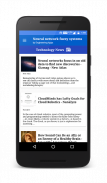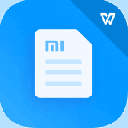









Neural network fuzzy systems

Neural network fuzzy systems介绍
The app is a complete free handbook of Neural network, fuzzy systems which cover important topics, notes, materials, news & blogs on the course. Download the App as a reference material & digital book for Brain and Cognitive Sciences, AI, computer science, machine learning, knowledge engineering programs & degree courses.
This useful App lists 149 topics with detailed notes, diagrams, equations, formulas & course material, the topics are listed in 10 chapters. The app is must have for all the engineering science students & professionals.
The app provides quick revision and reference to the important topics like a detailed flash card notes, it makes it easy & useful for the student or a professional to cover the course syllabus quickly before an exams or interview for jobs.
Track your learning, set reminders, edit the study material, add favorite topics, share the topics on social media.
You can also blog about engineering technology, innovation, engineering startups, college research work, institute updates, Informative links on course materials & education programs from your smartphone or tablet or at http://www.engineeringapps.net/.
Use this useful engineering app as your tutorial, digital book, a reference guide for syllabus, course material, project work, sharing your views on the blog.
Some of the topics Covered in the app are:
1) Register Allocation and Assignment
2) The Lazy-Code-Motion Algorithm
3) Matrix Multiply: An In-Depth Example
4) Rsa topic 1
5) Introduction to Neural Networks
6) History of neural networks
7) Network architectures
8) Artificial Intelligence of neural network
9) Knowledge Representation
10) Human Brain
11) Model of a neuron
12) Neural Network as a Directed Graph
13) The concept of time in neural networks
14) Components of neural Networks
15) Network Topologies
16) The bias neuron
17) Representing neurons
18) Order of activation
19) Introduction to learning process
20) Paradigms of learning
21) Training patterns and Teaching input
22) Using training samples
23) Learning curve and error measurement
24) Gradient optimization procedures
25) Exemplary problems allow for testing self-coded learning strategies
26) Hebbian learning rule
27) Genetic Algorithms
28) Expert systems
29) Fuzzy Systems for Knowledge Engineering
30) Neural Networks for Knowledge Engineering
31) Feed-forward Networks
32) The perceptron, backpropagation and its variants
33) A single layer perceptron
34) Linear Separability
35) A multilayer perceptron
36) Resilient Backpropagation
37) Initial configuration of a multilayer perceptron
38) The 8-3-8 encoding problem
39) Back propagation of error
40) Components and structure of an RBF network
41) Information processing of an RBF network
42) Combinations of equation system and gradient strategies
43) Centers and widths of RBF neurons
44) Growing RBF networks automatically adjust the neuron density
45) Comparing RBF networks and multilayer perceptrons
46) Recurrent perceptron-like networks
47) Elman networks
48) Training recurrent networks
49) Hopfield networks
50) Weight matrix
51) Auto association and traditional application
52) Heteroassociation and analogies to neural data storage
53) Continuous Hopfield networks
54) Quantization
55) Codebook vectors
56) Adaptive Resonance Theory
57) Kohonen Self-Organizing Topological Maps
58) Unsupervised Self-Organizing Feature Maps
59) Learning Vector Quantization Algorithms for Supervised Learning
60) Pattern Associations
61) The Hopfield Network
62) Limitations to using the Hopfield network
Each topic is complete with diagrams, equations and other forms of graphical representations for better learning and quick understanding.
Neural network, fuzzy systems is part of Brain and Cognitive Sciences, AI, computer science, machine learning, electrical, electronics, knowledge engineering education courses and technology degree programs at various universities.
应用程序是神经网络,覆盖重要的课题,笔记,资料,新闻和博客在球场上的模糊系统的完全免费的手册。下载App作为参考材料和数字书,脑与认知科学,人工智能,计算机科学,机器学习,知识工程计划及学位课程。
这个有用的应用程序列出149议题有详细的注释,图表,公式,公式和课程材料,题目中列出了10个章节。应用程序是必须为所有的工程专业的学生和专业人士。
该应用程序提供了快速修改和参考像一个详细的闪存卡音符的重要课题,它可以很容易和有效为学生或专业到考试或面试的作业之前迅速覆盖课程大纲。
跟踪学习,设置提醒,编辑学习材料,加入喜爱的主题,分享到社交媒体的主题。
您也可以在博客的工程技术,创新,工程初创企业,高校科研工作,研究所的更新,从智能手机或平板电脑或http://www.engineeringapps.net/教材及教育计划提供信息的链接。
使用这个有用的应用程序设计为您的教程,数字图书,参考指南,教学大纲,课程材料,项目工作,在博客上分享您的观点。
一些在应用程序讨论的主题有:
1)寄存器分配和分配
2)懒惰代码运动算法
3)矩阵乘法:一个更深入的例子
4)的Rsa话题1
5)介绍神经网络
6)神经网络的历史
7)网络架构
8)神经网络的人工智能
9)知识表示
10)人脑
11)一神经元模型
12)神经网络作为向图
13)在神经网络中的时间观念
14)神经网络的组件
15)网络拓扑
16)偏压神经元
17)代表神经元
18)的激活顺序
19)介绍的学习过程
20)学习范式
21)培训模式和教学投入
22)使用训练样本
23)学习曲线,误差测量
24)梯度优化程序
25)典型的问题,以便检测设备齐全编码的学习策略
26)赫布学习规则
27)遗传算法
28)专家系统
29),知识工程模糊系统
30)神经网络的知识工程
31)前馈网络
32)感知器,反向传播及其变种
33)单层感知器
34)线性可分
35)多层感知
36)弹性反向传播
37)一个多层感知器的初始配置
38)8-3-8编码的问题
39)误差的反向传播
40)组件和RBF神经网络结构
41)一个RBF神经网络的信息处理
42)方程组和梯度策略的组合
43)中心和RBF神经元的宽度
44)成长RBF网络自动调节神经元密度
45)比较RBF网络和多层感知
46)经常感知类网络
47)埃尔曼网络
48)培训复发网络
49)Hopfield网络
50)权重矩阵
51)自动关联和传统的应用
52)异联想和类比神经数据存储
53)连续Hopfield网络
54)量化
55)码本向量
56)自适应谐振理论
57)基于Kohonen自组织拓扑地图
58)无监督自组织特征映射
59)学习矢量量化算法监督学习
60)图案协会
61)的Hopfield网络
62)限制使用Hopfield网
每个主题都配有图表,方程式等形式更好地学习和快速了解图形表示的。
神经网络,模糊系统在各大学脑与认知科学,人工智能,计算机科学,学习机,电机,电器,知识工程教育课程和技术学位课程的一部分。


























